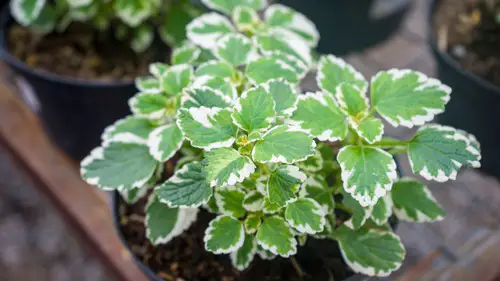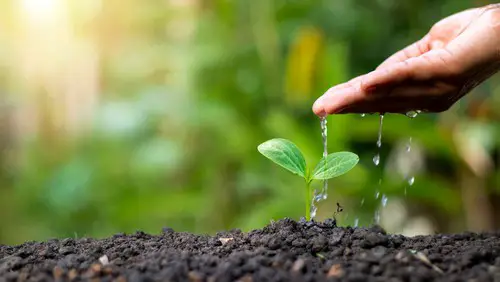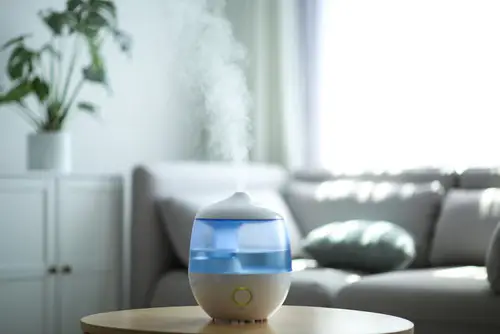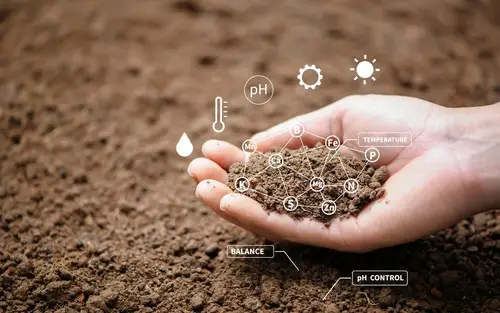Swedish Ivy is a popular houseplant that is known for its beautiful foliage and low maintenance. However, it can be quite frustrating when the leaves start turning brown. Swedish ivy leaves turning brown can be a sign of a bigger problem, and it’s important to address the issue as soon as possible to prevent further damage to the plant.
Understanding Swedish Ivy is the first step in preventing brown leaves. This plant is native to South Africa and is often grown as an indoor plant in other parts of the world. It has glossy, green leaves, and produces small, purple or white flowers.
Swedish Ivy is a trailing plant that grows well in hanging baskets or as a ground cover. It prefers bright, indirect light and well-draining soil.
Key Takeaways
- Brown leaves on Swedish Ivy can be a sign of a bigger problem
- Understanding the plant’s needs is crucial in preventing brown leaves
- Proper care and attention can revive brown Swedish Ivy
Check out these other top posts in this category:
Understanding Swedish Ivy

Swedish ivy, also known as creeping charlie, is a popular houseplant that is native to tropical and subtropical regions of Africa. It is an evergreen perennial that is known for its green leaves and ability to climb. Swedish ivy is a great indoor plant that can add a touch of greenery to any home.
Swedish ivy is a relatively easy plant to care for and can thrive in a variety of environments. It prefers bright, indirect light and well-draining soil. Overwatering can lead to root rot, so it’s important to let the soil dry out between waterings. Swedish ivy is also sensitive to cold temperatures and should be kept away from drafts.
One of the most common issues with Swedish ivy is brown leaves. Brown leaves can be a sign of several different problems, including low humidity, too much light, or underwatering.
Boosting the humidity in your home by adding a humidifier nearby, creating a pebble tray, or misting the plant often can help prevent brown leaves caused by low humidity. If your Swedish ivy is getting too much light, consider moving it to a shadier spot. Yellowing leaves can be a sign of underwatering or a lack of adequate light.
Swedish ivy is also known for its blooms, which can be big and purple. However, it’s important to note that Swedish ivy is primarily grown for its foliage, not its blooms. If your Swedish ivy is not blooming, it may be due to a lack of nutrients or light.
Swedish Ivy Leaves Turning Brown – 5 Common Problems
Swedish ivy leaves turning brown can be a sign of various issues that may be affecting the plant. This section will explore some of the most common causes of brown leaves in Swedish ivy plants.
1. Overwatering or Under-watering
One of the most common reasons for Swedish ivy leaves to turn brown is overwatering or under-watering. When the soil is too wet, the roots can become waterlogged, leading to root rot and brown leaves.
On the other hand, if the soil dries out completely, the plant may not be getting enough water, leading to brown and crispy leaves. It is important to maintain proper soil moisture levels and avoid overwatering or under-watering.
2. Poor Drainage

Poor drainage can also lead to brown leaves in Swedish ivy plants. When water is unable to drain properly, it can accumulate in the soil, leading to root rot and brown leaves. It is important to ensure that the pot has adequate drainage holes and that excess water can escape.
3. Fungal Infections
Fungal infections such as leaf spot and bacterial leaf spot can cause Swedish ivy leaves to turn brown. These infections are often caused by overwatering, high humidity levels, and poor air circulation. It is important to remove any affected leaves and treat the plant with a fungicide to prevent the spread of the infection.
4. Sun Exposure
Swedish ivy plants prefer indirect bright light from an east-facing window, or a few feet back from a south- or west-facing window. If placed in too much direct sunlight, the leaves can burn and turn brown.
It is important to ensure that the plant is not exposed to intense sunlight and is placed in an appropriate location with the right amount of light.
5. Temperature and Humidity
Swedish ivy plants prefer temperatures between 60°F to 75°F and high humidity levels. Low humidity levels and high temperatures can cause the leaves to turn brown. It is important to maintain appropriate temperature and humidity levels to prevent brown leaves in Swedish ivy plants.
Pests and Diseases
Swedish Ivy is a hardy plant that can withstand a variety of pests and diseases. However, like any other plant, it can still be vulnerable to certain issues. Here are some of the most common pests and diseases that can cause Swedish Ivy leaves to turn brown:
1. Fungal Infections
Swedish Ivy is susceptible to fungal infections such as Pear Blight and Bacterial Leaf Spot, which can cause the leaves to turn yellow, brown, or black. These infections are caused by bacteria or fungi that thrive in warm, humid conditions.
To prevent fungal infections, make sure to water your plant thoroughly but not too frequently, and avoid getting water on the leaves.
2. Spider Mites

Spider mites are tiny arachnids that can cause specks on the leaves of Swedish Ivy, along with bronzing, leaf loss, or even plant death. These pests bite into the cell walls of the leaves and extract the inside contents, with most of their activity occurring during spring and summer.
To get rid of spider mites, rinse the leaves with water, or use rubbing alcohol or chemical insecticides.
3. Mealybugs and Aphids
Mealybugs and aphids are common pests that can cause brown spots on the leaves of Swedish Ivy. These pests feed on the sap of the plant and excrete a sticky substance called honeydew, which can attract ants and other insects.
To get rid of mealybugs and aphids, use rubbing alcohol or chemical insecticides, or simply wipe the leaves with a damp cloth.
Swedish Ivy Care
Swedish ivy is a low-maintenance houseplant that can thrive in a variety of conditions. Proper care is essential for keeping the plant healthy and preventing brown, shriveled leaf tips. Here are some tips for caring for your Swedish ivy:
1. Watering
Swedish ivy prefers to be kept slightly moist, but not waterlogged. Overwatering can lead to root rot and other issues. Water the plant once a week and allow the soil to dry out slightly between waterings. Good drainage is necessary, so make sure the pot has drainage holes and use a well-draining potting mix.
2. Soil
Swedish ivy prefers soft, well-draining soil with a high nutrient potting mix. Test the soil pH regularly to ensure it remains between 6.0 and 7.5.
3. Fertilizer

Swedish ivy benefits from occasional fertilizing during the growing season. Use a balanced, water-soluble fertilizer every four to six weeks.
4. Light
Swedish ivy prefers bright, indirect sunlight, but can also tolerate low light conditions. Direct sunlight can scorch the leaves, so avoid placing the plant in full sun.
5. Humidity
Swedish ivy prefers moderate to high humidity levels. Brown, crispy leaves can be a sign that the humidity is too low. Boost the humidity in your home by adding a humidifier nearby, creating a pebble tray, or misting the plant often.
6. Pruning
Swedish ivy benefits from occasional pruning to maintain its shape and encourage bushier growth. Use clean, sharp pruners to pinch back the stems just above a leaf or node.
7. Repotting
Swedish ivy should be repotted every one to two years, or when it becomes pot-bound. Use a slightly larger pot with fresh potting soil and good drainage.
Preventing Brown Leaves
Swedish ivy is a popular houseplant that can add a touch of greenery to any room. However, brown leaves can be a common problem that can affect the plant’s appearance and health. Here are some tips on how to prevent brown leaves on your Swedish ivy:
1. Watering and Soil
One of the main reasons why Swedish ivy leaves turn brown is due to overwatering or poor drainage. It is important to water the plant only when the top inch of soil is dry to the touch. This will prevent the soil from becoming too wet, which can lead to root rot and brown leaves.
Additionally, it is essential to ensure that the pot has proper drainage holes to allow excess water to escape.
2. Light and Humidity

Swedish ivy prefers bright, indirect light. Direct sunlight can scorch the leaves, while low light can cause the plant to become leggy and weak. Additionally, Swedish ivy prefers medium to high humidity levels.
Dry air can cause the leaves to turn brown and crispy around the edges. To increase humidity, consider using a humidifier or placing a tray of water near the plant.
3. Fertilizer and Soil pH
Swedish ivy does not require frequent fertilization. Overfertilization can lead to salt build-up in the soil, which can cause the leaves to turn yellow and brown. It is best to fertilize the plant only once a month during the growing season.
Additionally, it is important to test the soil pH regularly to ensure that it is within the optimal range of 6.0 to 7.5.
4. Other Factors
Other factors that can contribute to brown leaves on Swedish ivy include temperature, drought, and poor soil quality. It is important to ensure that the plant is not exposed to extreme temperatures or allowed to dry out completely.
Additionally, using high-quality potting soil and providing adequate oxygen and evaporation can help prevent brown leaves and plant death.
Reviving Brown Swedish Ivy
Swedish Ivy leaves turning brown can be an indication of various issues that need to be addressed to revive the plant. Here are some steps to follow to revive brown Swedish Ivy:
1. Check Watering and Soil Drainage
Overwatering or poor drainage can cause root rot, which can lead to brown leaves and ultimately, plant death. On the other hand, under-watering can cause the soil to dry out and wilt the plant.
To revive brown Swedish Ivy, check the soil moisture level by sticking your finger an inch deep into the soil. If it feels dry, water the plant until the excess water drains out of the drainage holes. Make sure to empty the saucer underneath to avoid excess water sitting in it.
2. Adjust Temperature and Humidity Levels
Swedish Ivy prefers temperatures between 60-75°F (15-24°C) and humidity levels of 40-50%. Low humidity levels can cause the leaves to turn brown and crispy.
To increase humidity levels, place a humidifier near the plant or place a tray filled with water and pebbles underneath the pot. Avoid placing the plant in direct sunlight, as it can cause the leaves to burn and turn brown.
3. Fertilize the Plant
Fertilizing Swedish Ivy during the growing season (spring and summer) can help promote healthy green growth. Use a balanced water-soluble fertilizer every three weeks during active growth. Avoid fertilizing during the dormant season (fall and winter).
4. Test the Soil pH

Swedish Ivy prefers slightly acidic soil with a pH between 5.5-6.5. If the soil pH is too high or too low, it can affect the plant’s ability to absorb nutrients, leading to brown leaves. Test the soil pH using a soil pH meter or test kit and adjust it accordingly by adding soil amendments.
5. Prune Brown Leaves
Trimming brown leaves can help the plant redirect its energy towards healthy growth. Use clean, sharp pruning shears to cut off the brown leaves at the base of the stem. Avoid cutting off too many leaves at once, as it can shock the plant and slow down its growth.
By following these steps, brown Swedish Ivy leaves can be revived, and the plant can thrive again.
Frequently Asked Questions
Why are my ivy leaves turning brown?
Brown and crispy leaves can be a sign that your Swedish ivy is getting too much light. Ivy plants prefer indirect bright light from an east-facing window, or a few feet back from a south- or west-facing window. If placed in too much direct sunlight, your ivy leaves will burn.
How do I revive my dying ivy plant?
If your Swedish ivy is dying, there are a few things you can do to try and revive it. First, make sure it is getting the right amount of light and water. If it is getting too much or too little of either, adjust accordingly.
You can also try repotting it in fresh soil and trimming off any dead or damaged leaves.
What causes ivy leaves to turn brown and crispy?
In addition to too much light, other causes of brown and crispy leaves on your Swedish ivy include underwatering, overwatering, and pests.
Make sure you are watering your plant regularly and not letting the soil dry out completely. Check for any signs of pests, such as spider mites or mealybugs, and treat accordingly.
What are some common problems with Swedish ivy?
Swedish ivy is generally a hardy plant, but it can still experience some common problems. These include yellowing leaves, brown and crispy leaves, and root rot. Make sure you are providing the right amount of light and water, and repotting as necessary to avoid these issues.
How often should I water my Swedish ivy?
Swedish ivy likes to be kept consistently moist, but not waterlogged. Water your plant once a week, or as soon as the top inch of soil feels dry to the touch. Be sure to use distilled or purified water, as chlorine and fluoride can harm your plant.
What does overwatered ivy look like?
Overwatered Swedish ivy will have wilted leaves that are yellow or brown, and the soil will be soggy and waterlogged. If you suspect your plant is overwatered, stop watering it and let the soil dry out completely before watering again.

Hey, I’m Lisa and I’ve been an avid gardener for over 30 years. I love writing, talking and living in the garden! Feel free to connect with me on my socials below


